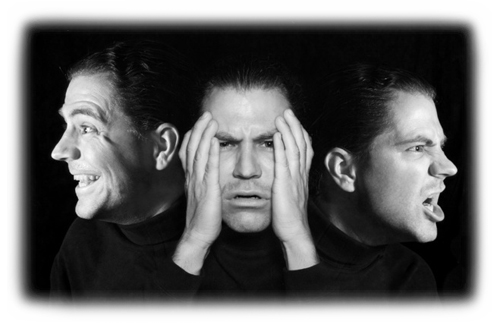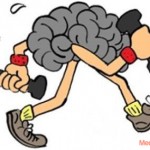Bipolar disorder, which is also known as manic-depressive disorder, is basically associated with the mood swings. These mood swings can happen from low of depression to the high of mania. This disorder can also be a condition where a person travels between the good or irritable mood and depression. This back and forth events can be very quick.
 When a person is going through the lower phase of mania, which is also called hypomania, he/she might seem happy and energetic. But, when at a higher level, they may seem impulsive, making poor decisions because of the unrealistic ideas of the future and would face difficulty in sleeping. In some cases, when people are at the highest level, they even show psychotic behavior which includes violence.
When a person is going through the lower phase of mania, which is also called hypomania, he/she might seem happy and energetic. But, when at a higher level, they may seem impulsive, making poor decisions because of the unrealistic ideas of the future and would face difficulty in sleeping. In some cases, when people are at the highest level, they even show psychotic behavior which includes violence.
Bipolar disorder is a lifetime condition but it can be controlled by taking certain treatments. Furthermore, in some cases, it can be controlled through medication and psychological counseling.
Symptoms:
As we said people suffering from bipolar disorder have mood swings, so the bipolar disorder is divided into various subtypes, which have their own symptoms. Let us see all those subtypes.
Manic phase:
Mania phase is the important feature of the bipolar disorder. Those who are suffering from it, experience the high energy and decreased sleep. In some cases, few go without sleeping for a few days. Those going through this phase would show pressured speech with their thoughts racing. These people can be easily distracted. Some other symptoms are listed below:
a) Dangerous careless or use of alcohol or drugs
b) Reduced judgment
c) Aggressive behavior
d) Increased sex drive
e) Dangerous behavior
f) Increased drive to achieve goals
g) Weak performance at work
h) Extravagant self-esteem
i) Frequent absence from work
j) Unwise financial decision
k) Euphoria
l) Increase in physical activity
m) Delusions
Depressive Phase:
This phase may include constant feeling of sadness, hopelessness, guilt, anger, isolation, anxiety and others. This may continue for at least two weeks and if left untreated can go up to six months. Other symptoms of this phase are:
a) Low or increased appetite
b) Suicidal thoughts or behavior
c) Sleeping problems
d) Irritability
e) Problem in concentration
f) Fatigue
g) Loss of interest in activities which were once enjoyed
h) Chronic pain without any proper cause
i) Lack of motivation
j) Loss of interest in sexual activity
k) Psychotic behavior
l) Shyness
m) Hallucination
Other Symptoms:
1. Seasonal changes in mood: In this case, a person’s mood changes with the change in season. As in, during the summer or spring, the person may be manic and during winter, depressed. For others, the cycle is reversed.
2. Psychosis: When there are a several incidents of mania and depression, a person may feel detached from the reality. People going through it may feel delusion and hallucinations.
3. Rapid cycling bipolar disorder: There are some people who go through several cycles of bipolar in a year; it could be four or more in a year. On the other hand, few go through it in every hour.
Treatments:
As we have seen that bipolar disorder is a lifelong problem. This means, a person suffering from it requires lifelong treatment. One has to make sure that the treatment is done under the guidance of the qualified psychiatric that is skilled in these treatments. The basic treatment includes medications, individual, family or group psychological counseling.
Medications:
1) Mood Swings Stabilizer: This is the first choice when it comes to treating bipolar disorder. In this case, people are treated with a continued treatment for bipolar disorder. This treatment includes Lithium treatment, Valproic acid divaplorix sodium and Lamictal.
2) Antidepressant Medications: This is used to treat the symptoms of depression in bipolar disorder. Generally, those who take antidepressant medicine often take mood stabilizers too. This is because taking antidepressant medicines may increase the switching to hypomania, mania or even developing rapid cyclic symptoms.
3) Psychotherapist: Apart from medication, this treatment can be the effective mode of treating bipolar disorder. It can provide a help to the person with bipolar disorder by providing, guidance, support and education.
Bipolar disorder can be a dangerous situation to a person if it is left untreated. It is better to get the treatment on time so that a person can be saved from severe mood swings. By now, you might have understood the kind of trouble and problem it can cause in your life.


 Cart : 0 items - $0.00
Cart : 0 items - $0.00










